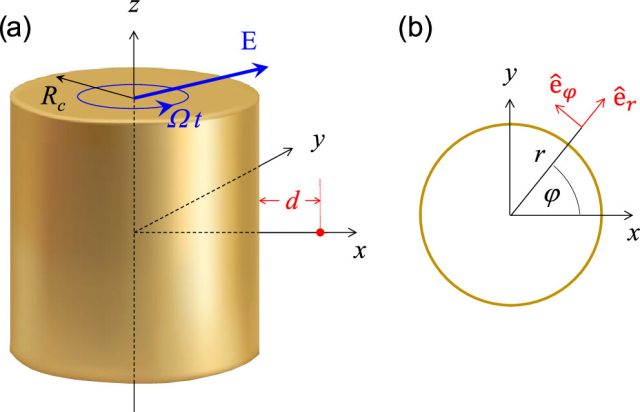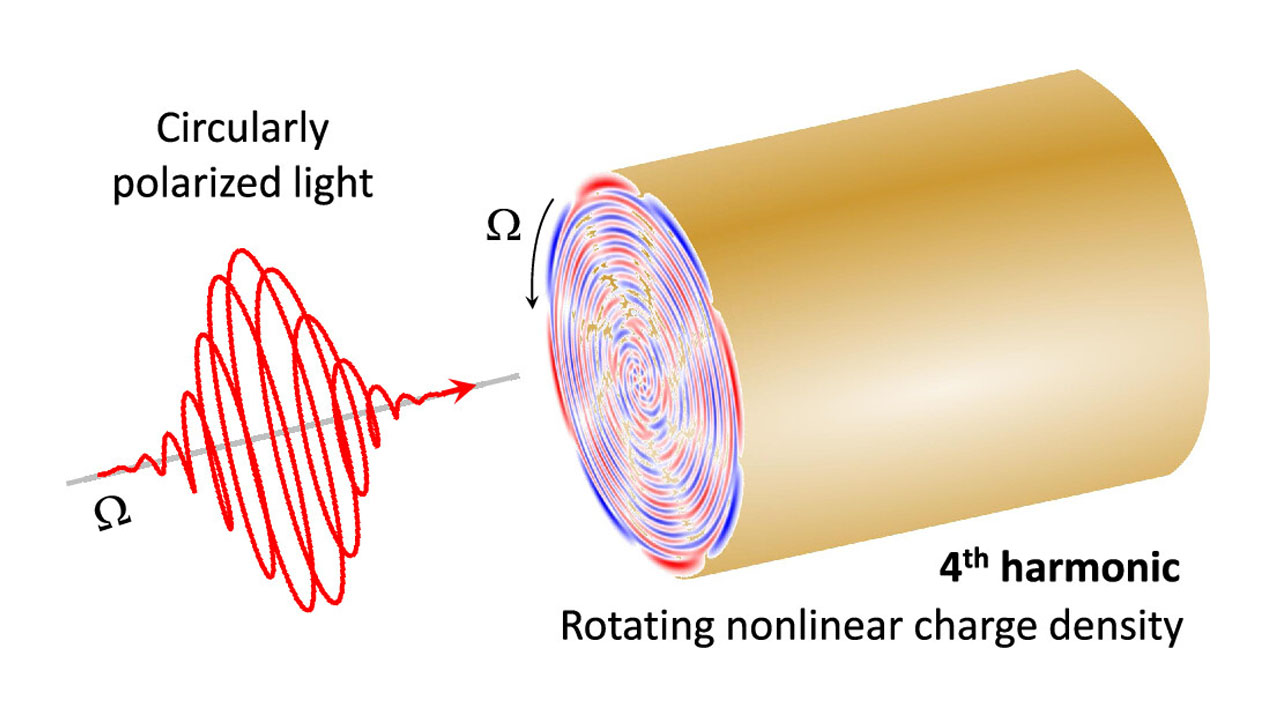New paradigm for the design of nonlinear nanoscale optical devices
Modern technologies enable the design and nanofabrication of photonic devices for manipulation of optical fields on spatial scales much smaller than the wavelength of light. In particular, the resonant coupling of photons with collective electronic excitations in metals and two-dimensional materials, i.e., plasmons, can be used to engineer strongly enhanced near fields confined to the atomic scale. Near-field enhancement boosts the nonlinear optical response so that plasmonic systems find practical applications not only in the linear but also in the nonlinear regime. Nonlinear metrology, nonlinear sensing, ultrafast spectroscopy, and nonlinear integrated photonic circuits operation exemplify various fields that take advantage of the nonlinear optical response of plasmonic systems.
The recent interest in the use of structured light has dynamized research on plasmonic metasurfaces exploiting spin-controlled nonlinear optical processes to obtain beam shaping through manipulation of orbital angular momentum and spin angular momentum (SAM) of light. Along with gas-phase techniques, the use of nonlinear metasurfaces for the generation of vacuum ultraviolet and extreme ultraviolet coherent light that carries angular momentum opens exciting perspectives in ultrafast spectroscopies and time-resolved experiments to probe chiral systems.
The development of devices for on-chip control of nonlinear fields requires knowledge of the nonlinear optical response of individual plasmonic nanoparticles and plasmonic molecules, which are the building blocks of such nonlinear devices. To this end, the hydrodynamic description adopted to address the nonlinear response of conduction electrons, and first applied to characterize the second-harmonic generation from metals and metal surfaces, has been further developed recently. However, except for chiral systems (where one is naturally interested in the nonlinear activity triggered by SAM-carrying incident fields), the case of a circularly polarized fundamental wave interacting with typical plasmonic nanoantennas has received less attention for nonlinear plasmonic applications.
Now, a team of researchers addresses 1 the nonlinear optical response of a plasmonic nanostructure to a SAM-carrying incident field. They use time-dependent density functional theory to study the dynamics of conduction electrons triggered by an intense electromagnetic pulse in a free-electron cylindrical nanowire.

The electric field of the pulse is circularly polarized in the transversal plane of the nanowire (see Figure 1). As a reference, the researchers also perform calculations for a linearly polarized fundamental field, as has been studied in detail in previous works.

Without any a priori assumptions, the results reveal that the optical response at the nth harmonic of the circularly polarized fundamental wave is determined by the multipole moment of order n of the induced nonlinear charge density that rotates around the nanowire axis at the fundamental frequency.
In particular, the induced near field is circularly polarized at all harmonics of the fundamental frequency and reveals an SAM inversion. Moreover, the frequency conversion in the far field is suppressed for circularly polarized incident pulses.
The team demonstrates that these results are a direct consequence of the symmetry of the system, as can be fully described and understood within an analytical approach. These findings are qualitatively robust and provide a new paradigm for the design of nonlinear nanoscale optical devices.
Author: César Tomé López is a science writer and the editor of Mapping Ignorance
Disclaimer: Parts of this article may have been copied verbatim or almost verbatim from the referenced research paper/s.
References
- Marina Quijada, Antton Babaze, Javier Aizpurua, and Andrei G. Borisov (2023) Nonlinear Optical Response of a Plasmonic Nanoantenna to Circularly Polarized Light: Rotation of Multipolar Charge Density and Near-Field Spin Angular Momentum Inversion ACS Photonics doi: 10.1021/acsphotonics.3c00783 ↩